 Heaven's Gate is a 1980 American epic Western film written and directed by Michael Cimino. Loosely based on the Johnson County War, it portrays a fictional dispute between land barons and
Heaven's Gate is a 1980 American epic Western film written and directed by Michael Cimino. Loosely based on the Johnson County War, it portrays a fictional dispute between land barons and  European immigrants in Wyoming in the 1890s. The cast includes Kris
European immigrants in Wyoming in the 1890s. The cast includes Kris 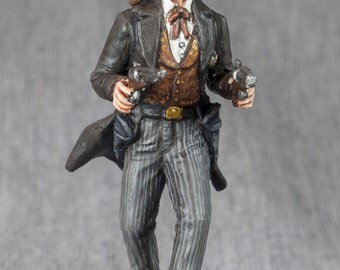 Kristofferson, Christopher Walken, Isabelle Huppert,
Kristofferson, Christopher Walken, Isabelle Huppert, Jeff Bridges,
Jeff Bridges,
John Hurt, Sam Waterston, Brad Dourif, Joseph Cotten, Geoffrey Lewis, David Mansfield, Richard Masur, Terry O'Quinn, Mickey Rourke, and Willem Dafoe in his first film role.Apart from being set in Wyoming and the fact that many of the characters have the names of key figures in the Johnson County War, the plot and the characters themselves have almost no relation to the actual historical people and events.
While there were certainly small numbers of settlers arriving in northern Wyoming, there were not hordes of poor European immigrants streaming en masse,let alone killing rich men's cattle out of hunger. Secondly, far from being an "enforcer" for the stockmen and a murderer, Nate Champion was a well-liked small rancher in Johnson County, whom the rich stockmen dubbed "king of the rustlers" because he stood up against their tactic of claiming all unbranded young cattle on the range
was a well-liked small rancher in Johnson County, whom the rich stockmen dubbed "king of the rustlers" because he stood up against their tactic of claiming all unbranded young cattle on the range
 was a well-liked small rancher in Johnson County, whom the rich stockmen dubbed "king of the rustlers" because he stood up against their tactic of claiming all unbranded young cattle on the range
was a well-liked small rancher in Johnson County, whom the rich stockmen dubbed "king of the rustlers" because he stood up against their tactic of claiming all unbranded young cattle on the range
Jim Averell was also a small-time rancher, about a hundred miles southwest of Johnson County. Along with his common-law wife Ellen (or Ella) Watson, he was murdered by rich stockmen two years before the Johnson County War began. Stockmen spread a story that Ella had exchanged sexual favors for stolen cattle, but this was false, and she was certainly not a bordello madam as portrayed in the film. It is unlikely that Watson or Averell ever knew Nate Champion. There are numerous additional ways in which the film bears little or no resemblance to real-life people or eventsT.The Johnson County War, also known as the War on Powder River and the Wyoming Range War, was a range war that took place in Johnson
he was murdered by rich stockmen two years before the Johnson County War began. Stockmen spread a story that Ella had exchanged sexual favors for stolen cattle, but this was false, and she was certainly not a bordello madam as portrayed in the film. It is unlikely that Watson or Averell ever knew Nate Champion. There are numerous additional ways in which the film bears little or no resemblance to real-life people or eventsT.The Johnson County War, also known as the War on Powder River and the Wyoming Range War, was a range war that took place in Johnson , Natrona
, Natrona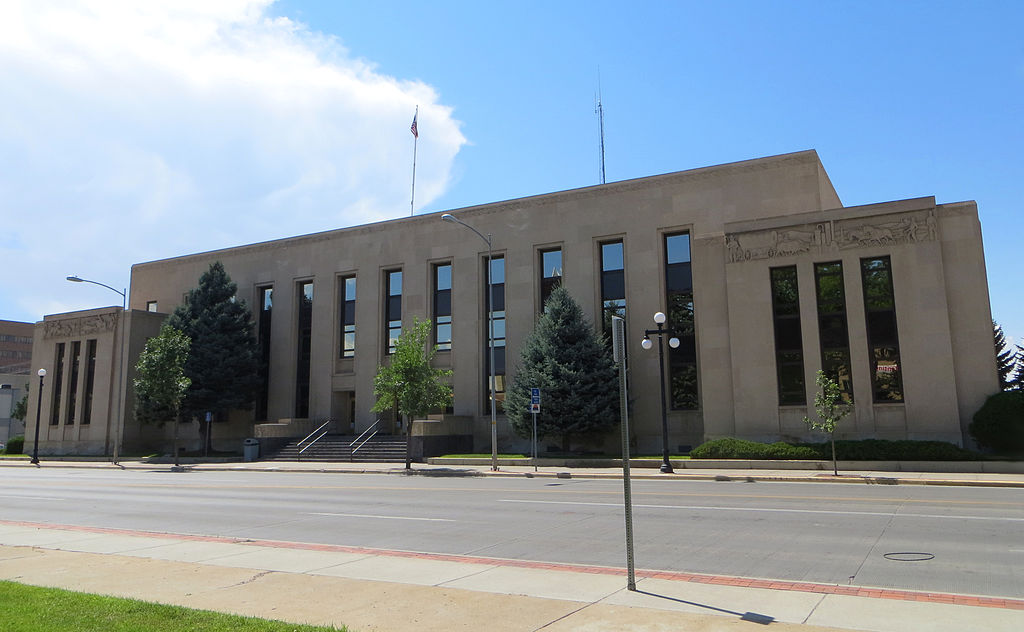 and Converse Counties,
and Converse Counties, Wyoming in April 1892. It was fought between small settling ranchers against larger established ranchers in the Powder River Country
Wyoming in April 1892. It was fought between small settling ranchers against larger established ranchers in the Powder River Country and culminated in a lengthy shootout between local ranchers, a band of hired killers, and a sheriff's posse, eventually requiring the intervention of the United States Cavalry on the orders of President Benjamin Harrison.
and culminated in a lengthy shootout between local ranchers, a band of hired killers, and a sheriff's posse, eventually requiring the intervention of the United States Cavalry on the orders of President Benjamin Harrison.
 he was murdered by rich stockmen two years before the Johnson County War began. Stockmen spread a story that Ella had exchanged sexual favors for stolen cattle, but this was false, and she was certainly not a bordello madam as portrayed in the film. It is unlikely that Watson or Averell ever knew Nate Champion. There are numerous additional ways in which the film bears little or no resemblance to real-life people or eventsT.The Johnson County War, also known as the War on Powder River and the Wyoming Range War, was a range war that took place in Johnson
he was murdered by rich stockmen two years before the Johnson County War began. Stockmen spread a story that Ella had exchanged sexual favors for stolen cattle, but this was false, and she was certainly not a bordello madam as portrayed in the film. It is unlikely that Watson or Averell ever knew Nate Champion. There are numerous additional ways in which the film bears little or no resemblance to real-life people or eventsT.The Johnson County War, also known as the War on Powder River and the Wyoming Range War, was a range war that took place in Johnson , Natrona
, Natrona and Converse Counties,
and Converse Counties, Wyoming in April 1892. It was fought between small settling ranchers against larger established ranchers in the Powder River Country
Wyoming in April 1892. It was fought between small settling ranchers against larger established ranchers in the Powder River Country and culminated in a lengthy shootout between local ranchers, a band of hired killers, and a sheriff's posse, eventually requiring the intervention of the United States Cavalry on the orders of President Benjamin Harrison.
and culminated in a lengthy shootout between local ranchers, a band of hired killers, and a sheriff's posse, eventually requiring the intervention of the United States Cavalry on the orders of President Benjamin Harrison.
The events have since become a highly mythologized and symbolic story of the Wild West, and over the years variations of the storyline have come to include some of the west's most famous historical figures and gunslingers. The storyline and its variations have served as the basis for numerous popular novels, films, and television shows.Conflict over land was a somewhat common occurrence in the development of the American West but was particularly prevalent during the late 19th century and early 20th century when large portions of the west were being settled by Americans for the first time. It is a period which historian Richard Maxwell Brown has called the "Western Civil War of Incorporation" and of which the Johnson County War was part.
In the early days in Wyoming most of the land was in the public domain, open to stock raising as open range and to homesteading. Large numbers of cattle were turned loose on the open range by large ranches.
Ranchers would hold a spring roundup where the cows and the calves belonging to each ranch were separated and the calves branded. Before the roundup, calves (especially orphan or stray calves) were sometimes surreptitiously branded. The large ranches defended against cattle rustling often by forbidding their employees from owning cattle and by lynching (or threatening to lynch) suspected rustlers. Property and use rights were usually respected among big and small ranches based on who was first to settle the land (the doctrine is known as Prior Appropriation) and the size of the herd. Nonetheless large ranching outfits would sometimes band together and use their power to monopolize large swaths of range land, preventing newcomers from settling the area.
Many of the large ranching outfits in Wyoming were organized as the Wyoming Stock Growers Association (the WSGA) and gathered socially as the Cheyenne Club in Cheyenne, Wyoming. Comprising some of the state's wealthiest and most influential residents, the organization held a great deal of political sway in the state and region. The WSGA organized the cattle industry by scheduling roundups and cattle shipments The WSGA also employed an agency of detectives to investigate cases of cattle theft from its members' holdings.
The often uneasy relationship between larger, wealthier ranches and smaller ranch settlers became steadily worse after the harsh winter of 1886-1887 when a series of blizzards and temperatures of 40-50 degrees below 0 °F (-45 °C) had followed an extremely hot and dry summer
Thousands of cattle were lost and large companies began to appropriate land and control the flow and supply of water in the area. Some of the harsher tactics included forcing settlers off their land and setting fire to settler buildings as well as trying to exclude the smaller ranchers from participation in the annual roundup. They justified these excesses on what was public land by using the catch-all allegation of rustling.
Thousands of cattle were lost and large companies began to appropriate land and control the flow and supply of water in the area. Some of the harsher tactics included forcing settlers off their land and setting fire to settler buildings as well as trying to exclude the smaller ranchers from participation in the annual roundup. They justified these excesses on what was public land by using the catch-all allegation of rustling.
Rustling in the local area was likely increasing due to the harsh grazing conditions, and the illegal exploits of an organized group of regional rustling outfits was becoming well publicized in the late 1880s. Well armed bands of horse and cattle rustlers were said to roam across various portions of Wyoming and Montana, with Montana cattle interests declaring "War on the Rustlers" in 1889 and Wyoming interests doing so a year later.
In Johnson County, with emotions running high, agents of the larger ranches killed several alleged rustlers from smaller ranches. Many were killed on dubious evidence or were simply found dead while the killers remained anonymous. Frank M. Canton , Sheriff of Johnson County in the early 1880s and better known as a detective for the WSGA, was rumored to be behind many of the deaths. The double lynching of Ella Watson and storekeeper Jim Averell took place in 1889, an event that enraged local residents. A number of additional dubious lynchings of alleged rustlers took place in 1891.
, Sheriff of Johnson County in the early 1880s and better known as a detective for the WSGA, was rumored to be behind many of the deaths. The double lynching of Ella Watson and storekeeper Jim Averell took place in 1889, an event that enraged local residents. A number of additional dubious lynchings of alleged rustlers took place in 1891.
In Johnson County, with emotions running high, agents of the larger ranches killed several alleged rustlers from smaller ranches. Many were killed on dubious evidence or were simply found dead while the killers remained anonymous. Frank M. Canton
 , Sheriff of Johnson County in the early 1880s and better known as a detective for the WSGA, was rumored to be behind many of the deaths. The double lynching of Ella Watson and storekeeper Jim Averell took place in 1889, an event that enraged local residents. A number of additional dubious lynchings of alleged rustlers took place in 1891.
, Sheriff of Johnson County in the early 1880s and better known as a detective for the WSGA, was rumored to be behind many of the deaths. The double lynching of Ella Watson and storekeeper Jim Averell took place in 1889, an event that enraged local residents. A number of additional dubious lynchings of alleged rustlers took place in 1891.
A group of smaller Johnson County ranchers led by a local settler named Nate Champion began to form the Northern Wyoming Farmers and Stock Growers' Association (NWFSGA) to compete with the WSGA. The WSGA "blacklisted" the NWFSGA and told them to stop all operations but the NWFSGA refused the WSGA's order to disband and instead made public their plans to hold their own roundup in the spring of 1892.
The WSGA, led by Frank Wolcott (WSGA Member and large North Platte rancher), 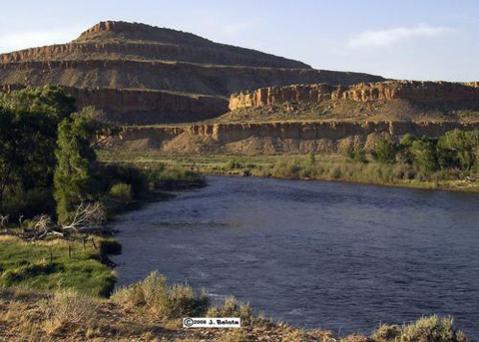 hired gunmen with the intention of eliminating alleged rustlers in Johnson County and breaking up the NWFSGA. Twenty-three gunmen from Paris, Texas
hired gunmen with the intention of eliminating alleged rustlers in Johnson County and breaking up the NWFSGA. Twenty-three gunmen from Paris, Texas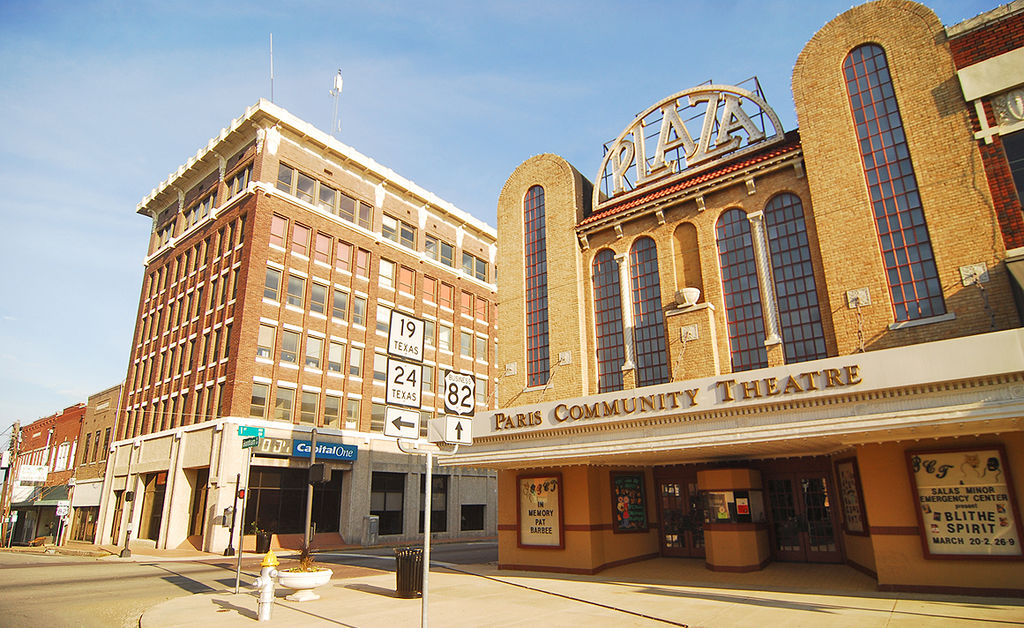 and four cattle detectives from the WSGA were hired along with Idaho frontiersman George Dunning, who later turned against the group. Some WSGA and Wyoming dignitaries also joined the expedition, including State Senator Bob Tisdale, state water commissioner W. J. Clarke, and W. C. Irvine and Hubert Teshemacher, both instrumental in organizing Wyoming's statehood four years earlier.
and four cattle detectives from the WSGA were hired along with Idaho frontiersman George Dunning, who later turned against the group. Some WSGA and Wyoming dignitaries also joined the expedition, including State Senator Bob Tisdale, state water commissioner W. J. Clarke, and W. C. Irvine and Hubert Teshemacher, both instrumental in organizing Wyoming's statehood four years earlier.
They were accompanied by surgeon Dr. Charles Penrose as well as Ed Towse, a reporter for the Cheyenne Sun, and a newspaper reporter for the Chicago Herald, Sam T. Clover, whose lurid first-hand accounts later appeared in eastern newspapers
A total expedition of 50 men was organized.
 hired gunmen with the intention of eliminating alleged rustlers in Johnson County and breaking up the NWFSGA. Twenty-three gunmen from Paris, Texas
hired gunmen with the intention of eliminating alleged rustlers in Johnson County and breaking up the NWFSGA. Twenty-three gunmen from Paris, Texas and four cattle detectives from the WSGA were hired along with Idaho frontiersman George Dunning, who later turned against the group. Some WSGA and Wyoming dignitaries also joined the expedition, including State Senator Bob Tisdale, state water commissioner W. J. Clarke, and W. C. Irvine and Hubert Teshemacher, both instrumental in organizing Wyoming's statehood four years earlier.
and four cattle detectives from the WSGA were hired along with Idaho frontiersman George Dunning, who later turned against the group. Some WSGA and Wyoming dignitaries also joined the expedition, including State Senator Bob Tisdale, state water commissioner W. J. Clarke, and W. C. Irvine and Hubert Teshemacher, both instrumental in organizing Wyoming's statehood four years earlier.They were accompanied by surgeon Dr. Charles Penrose as well as Ed Towse, a reporter for the Cheyenne Sun, and a newspaper reporter for the Chicago Herald, Sam T. Clover, whose lurid first-hand accounts later appeared in eastern newspapers
A total expedition of 50 men was organized.
To lead the expedition the WSGA hired Canton, a former Johnson County Sheriff-turned-gunman and WSGA detective. Canton's gripsack was later found to contain a list of dozens of rustlers to be either shot or hanged and a contract to pay the Texans $5 a day plus a bonus of $50 for every rustler killed. The group became known as "The Invaders," or alternately, "Wolcott's Regulators".
John Clay, a prominent Wyoming businessman, was suspected of playing a major role in planning the Johnson County invasion. Clay denied this, saying that in 1891 he advised Wolcott against the scheme and was out of the country when it was undertaken. He later helped the “invaders” avoid punishment after their surrender
The group organized in Cheyenne and proceeded by a specially hired train to Casper , Wyoming and then toward Johnson County onhorseback, cutting the telegraph lines north of Douglas, Wyoming
, Wyoming and then toward Johnson County onhorseback, cutting the telegraph lines north of Douglas, Wyoming in order to prevent an alarm. While on horseback Canton and the gunmen traveled ahead while the party of WSGA officials led by Wolcott followed a safe distance behind.
in order to prevent an alarm. While on horseback Canton and the gunmen traveled ahead while the party of WSGA officials led by Wolcott followed a safe distance behind.
 , Wyoming and then toward Johnson County onhorseback, cutting the telegraph lines north of Douglas, Wyoming
, Wyoming and then toward Johnson County onhorseback, cutting the telegraph lines north of Douglas, Wyoming in order to prevent an alarm. While on horseback Canton and the gunmen traveled ahead while the party of WSGA officials led by Wolcott followed a safe distance behind.
in order to prevent an alarm. While on horseback Canton and the gunmen traveled ahead while the party of WSGA officials led by Wolcott followed a safe distance behind.
The first target of the WSGA was Nate Champion at the KC Ranch (of which today's town of Kaycee is a namesake), a small rancher who was active in the efforts of small ranchers to organize a competing roundup. The group traveled to the ranch late in the night of Friday April 8, 1892, quietly surrounded the buildings and waited for daybreak.
Three men besides Champion were at the KC. Two men who were evidently spending the night on their way through were captured as they emerged from the cabin early that morning to collect water at the nearby Powder River, while the third, Nick Ray, was shot while standing inside the doorway of the cabin and died a few hours later. Champion was besieged inside the log cabin.
Three men besides Champion were at the KC. Two men who were evidently spending the night on their way through were captured as they emerged from the cabin early that morning to collect water at the nearby Powder River, while the third, Nick Ray, was shot while standing inside the doorway of the cabin and died a few hours later. Champion was besieged inside the log cabin.
During the siege, Champion kept a poignant journal which contained a number of notes he wrote to friends while taking cover inside the cabin. "Boys, I feel pretty lonesome just now. I wish there was someone here with me so we could watch all sides at once." The last journal entry read: "Well, they have just got through shelling the house like hail. I heard them splitting wood. I guess they are going to fire the house tonight. I think I will make a break when night comes, if alive. Shooting again. It's not night yet. The house is all fired. Goodbye, boys, if I never see you again."
With the house on fire, Nate Champion signed his journal entry and put it in his pocket before running from the back door with a six shooter in one hand and a knife in the other. As he emerged he was shot by four men and the invaders later pinned a note on Champion's bullet-riddled chest that read "Cattle Thieves Beware".
Two passers-by noticed the ruckus that Saturday afternoon and local rancher Jack Flagg rode to Buffalo (the county seat of Johnson County) where the sheriff raised a posse of 200 men over the next 24 hours and the party set out for the KC on Sunday night, April 10.
where the sheriff raised a posse of 200 men over the next 24 hours and the party set out for the KC on Sunday night, April 10.
 where the sheriff raised a posse of 200 men over the next 24 hours and the party set out for the KC on Sunday night, April 10.
where the sheriff raised a posse of 200 men over the next 24 hours and the party set out for the KC on Sunday night, April 10.The telegram read:The WSGA group then headed north on Sunday toward Buffalo to continue its show of force.
 The posse led by the sheriff caught up with the WSGA "Invaders" by early Monday morning of the 11th and besieged them at the TA Ranch on Crazy Woman Creek.
The posse led by the sheriff caught up with the WSGA "Invaders" by early Monday morning of the 11th and besieged them at the TA Ranch on Crazy Woman Creek.  The gunmen took refuge inside a log barn on the ranch. Ten of the gunmen then tried to escape the barn behind a fusillade but the posse beat them back and killed three.
The gunmen took refuge inside a log barn on the ranch. Ten of the gunmen then tried to escape the barn behind a fusillade but the posse beat them back and killed three.One of the WSGA group escaped and was able to contact the acting Governor of Wyoming the next day. Frantic efforts to save the WSGA group ensued and two days into the siege Governor Barber was able to telegraph President Benjamin Harrison a plea for help late on the night of April 12, 1892.

| The barn at the TA Ranch, where the "regulators" were besieged by the sheriff's posse.“ | About sixty-one owners of live stock are reported to have made an armed expedition into Johnson County for the purpose of protecting their live stock and preventing unlawful roundups by rustlers. They are at ‘T.A.’ Ranch, thirteen miles from Fort McKinney, and are besieged by Sheriff and posse and by rustlers from that section of the country, said to be two or three hundred in number. The wagons of stockmen were captured and taken away from them and it is reported a battle took place yesterday, during which a number of men were killed. Great excitement prevails. Both parties are very determined and it is feared that if successful will show no mercy to the persons captured. The civil authorities are unable to prevent violence. The situation is serious and immediate assistance will probably prevent great loss of life. | ” |
Harrison immediately ordered the U.S. Secretary of War Stephen B. Elkins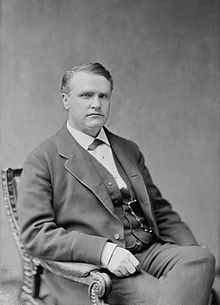 to address the situation under Article IV, Section 4, Clause 2 of the U.S. Constitution, which allows for the use of U.S. forces under the President's orders for "protection from invasion and domestic violence".The Sixth Cavalry
to address the situation under Article IV, Section 4, Clause 2 of the U.S. Constitution, which allows for the use of U.S. forces under the President's orders for "protection from invasion and domestic violence".The Sixth Cavalry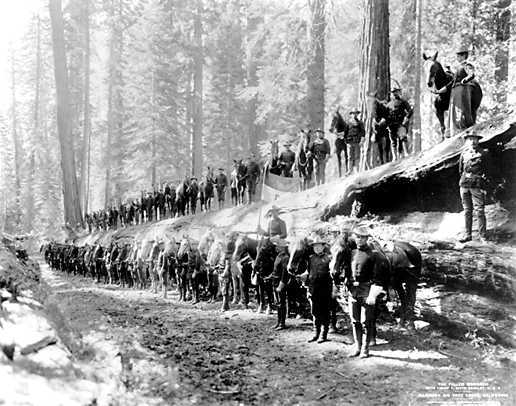 from Fort McKinney
from Fort McKinney near Buffalo was ordered to proceed to the TA ranch at once and take custody of the WSGA expedition. The 6th Cavalry left Fort McKinney a few hours later at 2 am on April 13 and reached the TA ranch at 6:45 am.
near Buffalo was ordered to proceed to the TA ranch at once and take custody of the WSGA expedition. The 6th Cavalry left Fort McKinney a few hours later at 2 am on April 13 and reached the TA ranch at 6:45 am.
The expedition surrendered to the Sixth soon after and was saved just as the posse had finished building a series of breastworks to shoot gunpowder on the invader's log barn shelter so that it could be set on fire from a distance.The Sixth Cavalry took possession of Wolcott and 45 other men with 45 rifles, 41 revolvers and some 5,000 rounds of ammunition
 to address the situation under Article IV, Section 4, Clause 2 of the U.S. Constitution, which allows for the use of U.S. forces under the President's orders for "protection from invasion and domestic violence".The Sixth Cavalry
to address the situation under Article IV, Section 4, Clause 2 of the U.S. Constitution, which allows for the use of U.S. forces under the President's orders for "protection from invasion and domestic violence".The Sixth Cavalry from Fort McKinney
from Fort McKinney near Buffalo was ordered to proceed to the TA ranch at once and take custody of the WSGA expedition. The 6th Cavalry left Fort McKinney a few hours later at 2 am on April 13 and reached the TA ranch at 6:45 am.
near Buffalo was ordered to proceed to the TA ranch at once and take custody of the WSGA expedition. The 6th Cavalry left Fort McKinney a few hours later at 2 am on April 13 and reached the TA ranch at 6:45 am.The expedition surrendered to the Sixth soon after and was saved just as the posse had finished building a series of breastworks to shoot gunpowder on the invader's log barn shelter so that it could be set on fire from a distance.The Sixth Cavalry took possession of Wolcott and 45 other men with 45 rifles, 41 revolvers and some 5,000 rounds of ammunition
The text of Barber's telegram to the President was printed on the front page of The New York Times on April 14, and a first-hand account of the siege at the T.A. appeared inThe Times and the Chicago Herald and other papers.
The WSGA group was taken to Cheyenne to be held at the barracks of Fort D.A. Russell as the Laramie County jail was unable to hold that many prisoners. They received preferential treatment and were allowed to roam the base by day as long as they agreed to return to the jail to sleep at night. Johnson County officials were upset that the group was not kept locally at Ft. McKinney. The General in charge of the 6th Cavalry felt that tensions were too high for the prisoners to remain in the area. Hundreds of armed locals sympathetic to both sides of the conflict were said to have gone to Ft. McKinney over the next few days under the mistaken impression the invaders were being held there.
as the Laramie County jail was unable to hold that many prisoners. They received preferential treatment and were allowed to roam the base by day as long as they agreed to return to the jail to sleep at night. Johnson County officials were upset that the group was not kept locally at Ft. McKinney. The General in charge of the 6th Cavalry felt that tensions were too high for the prisoners to remain in the area. Hundreds of armed locals sympathetic to both sides of the conflict were said to have gone to Ft. McKinney over the next few days under the mistaken impression the invaders were being held there.
 as the Laramie County jail was unable to hold that many prisoners. They received preferential treatment and were allowed to roam the base by day as long as they agreed to return to the jail to sleep at night. Johnson County officials were upset that the group was not kept locally at Ft. McKinney. The General in charge of the 6th Cavalry felt that tensions were too high for the prisoners to remain in the area. Hundreds of armed locals sympathetic to both sides of the conflict were said to have gone to Ft. McKinney over the next few days under the mistaken impression the invaders were being held there.
as the Laramie County jail was unable to hold that many prisoners. They received preferential treatment and were allowed to roam the base by day as long as they agreed to return to the jail to sleep at night. Johnson County officials were upset that the group was not kept locally at Ft. McKinney. The General in charge of the 6th Cavalry felt that tensions were too high for the prisoners to remain in the area. Hundreds of armed locals sympathetic to both sides of the conflict were said to have gone to Ft. McKinney over the next few days under the mistaken impression the invaders were being held there.
The Johnson County attorney began to gather evidence for the case and the details of the WSGA's plan emerged. Canton's gripsack was found to contain a list of seventy alleged rustlers who were to be shot or hanged, a list of ranch houses the invaders had burned, and a contract to pay each Texan five dollars a day plus a bonus of $50 for each person killed.
The invaders' plans reportedly included eventually murdering people as far away as Casper and Douglas. The Times reported on April 23 that “the evidence is said to implicate more than twenty prominent stockmen of Cheyenne whose names have not been mentioned heretofore, also several wealthy stockmen of Omaha, as well as to compromise men high in authority in the State of Wyoming. They will all be charged with aiding and abetting the invasion, and warrants will be issued for the arrest of all of them.”
The invaders' plans reportedly included eventually murdering people as far away as Casper and Douglas. The Times reported on April 23 that “the evidence is said to implicate more than twenty prominent stockmen of Cheyenne whose names have not been mentioned heretofore, also several wealthy stockmen of Omaha, as well as to compromise men high in authority in the State of Wyoming. They will all be charged with aiding and abetting the invasion, and warrants will be issued for the arrest of all of them.”
Charges against the men "high in authority" in Wyoming were never filed. Eventually the invaders were released on bail and were told to return to Wyoming for the trial. Many fled to Texas and were never seen again. In the end the WSGA group went free after the charges were dropped on the excuse that Johnson County refused to pay for the costs of prosecution.
The costs of housing the men at Fort D.A. Russell were said to exceed $18,000 and the sparsely populated Johnson County was unable to pay.
The costs of housing the men at Fort D.A. Russell were said to exceed $18,000 and the sparsely populated Johnson County was unable to pay.
Tensions in Johnson County remained high and the 6th Cavalry was said to be swaying under the local political and social pressures and were unable to keep the peace. The 9th Cavalry of "Buffalo Soldiers" was ordered to Fort McKinney to replace the 6th. In a fortnight the Buffalo Soldiers moved from Nebraska to the rail town of Suggs, Wyoming
(Named for a man who ran a large cattle outfit in the vicinity. Close to Arvada, when Suggs went out of existence, Arvada grew up just across the river. (WPA) The town of Suggs near Arvada, Wyoming started as a camp for the construction workers building the Burlington and Missouri rail line across northeastern Wyoming in 1892. ... In 1891, a new post office was established on the Sugg Ranch. The office was named Suggs, Wyoming-the name spelled with an "s". Afterwards, in all the historical references to Mr. Sugg, he was called J. D. Suggs rather than J. D. Sugg. And the new town across the river that was built in 1892 was also called Suggs. (Wheel of Time)(where they created "Camp Bettens" to quell pressure from the local population.
One Buffalo Soldier was killed and two wounded in gun battles with locals. The 9th Cavalry remained in Wyoming until November.
(Named for a man who ran a large cattle outfit in the vicinity. Close to Arvada, when Suggs went out of existence, Arvada grew up just across the river. (WPA) The town of Suggs near Arvada, Wyoming started as a camp for the construction workers building the Burlington and Missouri rail line across northeastern Wyoming in 1892. ... In 1891, a new post office was established on the Sugg Ranch. The office was named Suggs, Wyoming-the name spelled with an "s". Afterwards, in all the historical references to Mr. Sugg, he was called J. D. Suggs rather than J. D. Sugg. And the new town across the river that was built in 1892 was also called Suggs. (Wheel of Time)(where they created "Camp Bettens" to quell pressure from the local population.
One Buffalo Soldier was killed and two wounded in gun battles with locals. The 9th Cavalry remained in Wyoming until November.
A number of tall tales were spun by both sides afterwards in an attempt to make their actions appear morally justified. Parties sympathetic to the invaders painted Nate Champion as the leader of a vast cattle rustling empire and that he was a leading member of the fabled "Red Sash Gang" of outlaws that supposedly included the likes of everyone from Jesse James to the Hole in the Wall Gang. These rumors have since been discredited.
While some accounts do note that Champion wore a red sash at the time of his death, such sashes were common. While the Hole in the Wall Gang was known to hide out in Johnson County, there is no evidence that Champion had any relationship to them.[ Parties sympathetic to the smaller ranchers spun tales that included some of the west's most notorious gunslingers under the employ of the Invaders, including such legends as Tom Horn and Big Nose George Parrot.
and Big Nose George Parrot. Horn did briefly work as a detective for the WSGA in the 1890s but there is no evidence he was involved in the war.
Horn did briefly work as a detective for the WSGA in the 1890s but there is no evidence he was involved in the war. Ella Watson was lynched in 1889 by wealthy ranchers who accused her of cattle rustling, a charge that was later shown to be false.
Ella Watson was lynched in 1889 by wealthy ranchers who accused her of cattle rustling, a charge that was later shown to be false.
While some accounts do note that Champion wore a red sash at the time of his death, such sashes were common. While the Hole in the Wall Gang was known to hide out in Johnson County, there is no evidence that Champion had any relationship to them.[ Parties sympathetic to the smaller ranchers spun tales that included some of the west's most notorious gunslingers under the employ of the Invaders, including such legends as Tom Horn
 and Big Nose George Parrot.
and Big Nose George Parrot. Horn did briefly work as a detective for the WSGA in the 1890s but there is no evidence he was involved in the war.
Horn did briefly work as a detective for the WSGA in the 1890s but there is no evidence he was involved in the war. Ella Watson was lynched in 1889 by wealthy ranchers who accused her of cattle rustling, a charge that was later shown to be false.
Ella Watson was lynched in 1889 by wealthy ranchers who accused her of cattle rustling, a charge that was later shown to be false.
Emotions ran high for many years following the 'Johnson County Cattle War' as some viewed the large and wealthy ranchers as heroes who took justice into their own hands in order to defend their rights, while others saw the WSGA as heavy-handed vigilantes running roughshod over the law of the land.
Although many of the leaders of the WSGA's hired force, such as W. C. Irvine, were Democrats, the ranchers who had hired the group were tied to the Republican party and their opponents were mostly Democrats. Many viewed the rescue of the WSGA group at the order of President Harrison (a Republican) and the failure of the courts to prosecute them a serious political scandal with overtones of class war. As a result of the scandal, the Democratic Party became popular in Wyoming for a time, winning the governorship in 1895 and taking control of both houses of the state legislature during the two elections after the events.
Wyoming voted for the Democrat William Jennings Bryan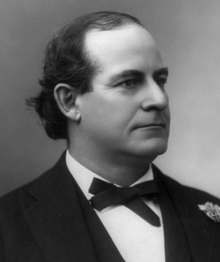 in the 1896 U.S. Presidential Election, and Johnson County was one of the two counties in the state with the largest Bryan majorities.
in the 1896 U.S. Presidential Election, and Johnson County was one of the two counties in the state with the largest Bryan majorities.
Wyoming voted for the Democrat William Jennings Bryan
 in the 1896 U.S. Presidential Election, and Johnson County was one of the two counties in the state with the largest Bryan majorities.
in the 1896 U.S. Presidential Election, and Johnson County was one of the two counties in the state with the largest Bryan majorities.
Historian Daniel Belgrad argues that in the 1880s centralized range management was emerging as the solution to the overgrazing that had depleted open ranges. Furthermore, cattle prices at the time were low. Larger ranchers were hurt by mavericking (taking lost, unbranded calves from other ranchers' herds), and responded by organizing cooperative roundups, blacklisting, and lobbying for stricter anti-maverick laws. These ranchers formed the WSGA and hired gunmen to hunt down rustlers, but local farmers resented the ranchers' collective political power. The farmers moved toward decentralization and the use of private winter pastures.
Randy McFerrin and Douglas Wills argue that the confrontation represented opposing property rights systems. The result was the end of the open-range system and the ascendancy of large-scale stock ranching and farming. The popular image of the war, however, remains that of vigilantism by aggressive landed interests against small individual settlers defending their rights.
Randy McFerrin and Douglas Wills argue that the confrontation represented opposing property rights systems. The result was the end of the open-range system and the ascendancy of large-scale stock ranching and farming. The popular image of the war, however, remains that of vigilantism by aggressive landed interests against small individual settlers defending their rights.
In 1894, witness Asa Shinn Mercer 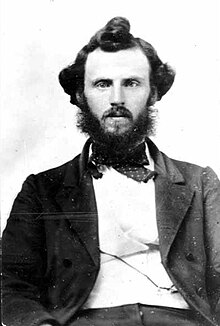 published an indignant account of the war, titled The Banditti of the Plains.
published an indignant account of the war, titled The Banditti of the Plains. The book was suppressed for many years as the WSGA tracked down and destroyed all but a few of the first edition copies from the 1894 printing, and was rumored to have hijacked and destroyed the second printing as it was being shipped from a printer north of Denver, Colorado.
The book was suppressed for many years as the WSGA tracked down and destroyed all but a few of the first edition copies from the 1894 printing, and was rumored to have hijacked and destroyed the second printing as it was being shipped from a printer north of Denver, Colorado. The book was, however, reprinted several times in the 20th century. Most recently, (2015) an edition by Palladium Press (a facsimile of the 1935 Grabhorn Press edition) has been released.
The book was, however, reprinted several times in the 20th century. Most recently, (2015) an edition by Palladium Press (a facsimile of the 1935 Grabhorn Press edition) has been released.
 published an indignant account of the war, titled The Banditti of the Plains.
published an indignant account of the war, titled The Banditti of the Plains. The book was suppressed for many years as the WSGA tracked down and destroyed all but a few of the first edition copies from the 1894 printing, and was rumored to have hijacked and destroyed the second printing as it was being shipped from a printer north of Denver, Colorado.
The book was suppressed for many years as the WSGA tracked down and destroyed all but a few of the first edition copies from the 1894 printing, and was rumored to have hijacked and destroyed the second printing as it was being shipped from a printer north of Denver, Colorado. The book was, however, reprinted several times in the 20th century. Most recently, (2015) an edition by Palladium Press (a facsimile of the 1935 Grabhorn Press edition) has been released.
The book was, however, reprinted several times in the 20th century. Most recently, (2015) an edition by Palladium Press (a facsimile of the 1935 Grabhorn Press edition) has been released.
There were major setbacks in the film's production due to cost and time overruns, negative press, and rumors about Cimino's allegedly overbearing directorial style. It is generally considered one of the biggest box office bombs of all time, and in some circles has been considered to be one of the worst films ever made. It opened to poor reviews and earned $3.5 million domestically (from an estimated $44 million budget) eventually contributing to the near collapse of its studio, United Artists, and effectively destroying the reputation of Cimino, previously one of the ascendant directors of Hollywood owing to his celebrated 1978 film The Deer Hunter, which had won Academy Awards for Best Picture and Best Director in 1979.
Cimino had an expansive and ambitious vision for the film and pushed it about four times over its planned budget. The movie's financial problems and United Artists' consequent demise led to a move away from director-driven film production in the American film industry and a shift toward greater studio control of films
Cimino had an expansive and ambitious vision for the film and pushed it about four times over its planned budget. The movie's financial problems and United Artists' consequent demise led to a move away from director-driven film production in the American film industry and a shift toward greater studio control of films
As time has progressed, a number of substantial assessments have become more nuanced and in some cases more positive,and now some critics have described Heaven's Gate as a "modern masterpiece" whose 1980 re-edit after poor press screenings was characterized as "one of the greatest injustices of cinematic history


